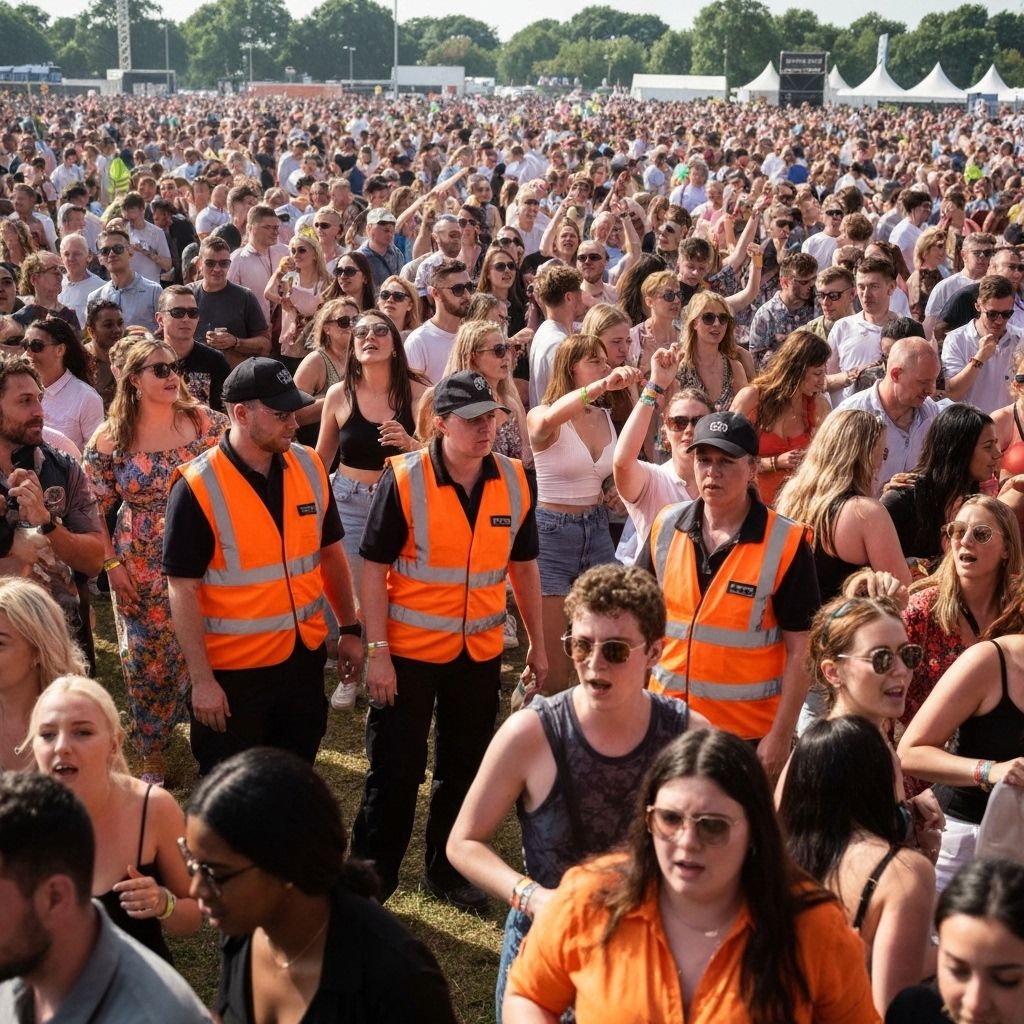Event Safety Planning: Protecting Attendees at Large Gatherings in the UK

Planning a large event in the UK comes with significant safety responsibilities. Here's how to ensure your attendees stay safe and informed throughout your event.
Pre-Event Planning
Risk Assessment
Before your event, conduct a comprehensive risk assessment, considering UK-specific factors:
- Identify potential hazards specific to your venue (e.g., flood risk, urban security)
- Evaluate crowd capacity and flow patterns
- Assess weather-related risks (Met Office warnings)
- Consider security threats and vulnerabilities (e.g., terrorism threat levels)
- Review historical incidents at similar UK events
Communication Infrastructure
Establish your communication systems well in advance:
- Deploy alert system and test coverage (including UK Emergency Alerts Service compatibility)
- Set up command centre communications
- Establish staff communication protocols
- Create attendee opt-in mechanisms (compliant with UK GDPR)
- Prepare emergency contact procedures and liaison with UK emergency services
Attendee Registration and Opt-In
Make it easy for attendees to receive safety alerts:
- QR codes at entry points for quick registration
- Integration with ticketing systems
- Mobile app enrolment options
- Clear privacy policies and opt-out procedures (UK GDPR compliant)
- Incentives for registration (exclusive content, updates)
Zone-Based Communication
Large UK venues benefit from zone-based alerts:
- Divide venue into logical sections (e.g., by stadium seating, festival zones)
- Create section-specific alert groups
- Enable targeted notifications for localised issues
- Provide wayfinding assistance (e.g., for emergency exits)
- Manage crowd flow with targeted messaging
Real-Time Monitoring
During the event, maintain constant situational awareness:
- Monitor weather conditions continuously
- Track crowd density in real-time
- Coordinate with security and medical teams (including NHS services)
- Watch social media for emerging issues
- Maintain communication with local authorities and UK emergency services
Emergency Response Protocols
Medical Emergencies
- Rapid notification of medical teams (NHS, St John Ambulance)
- Clear communication of incident location
- Crowd management around affected areas
- Updates to attendees as appropriate
- Coordination with emergency services (999 operators)
Weather Events
- Early warning systems for severe weather (Met Office data)
- Shelter-in-place instructions
- Evacuation procedures if necessary
- All-clear notifications
- Event resumption communications
Security Incidents
- Immediate alert to security personnel and UK police
- Attendee safety instructions
- Evacuation coordination if needed
- Law enforcement coordination
- Post-incident communication
Post-Event Analysis
After your event, review your safety performance:
- Analyse alert delivery metrics
- Review incident response times
- Collect staff and attendee feedback
- Identify areas for improvement
- Document lessons learned (for future UK events)
Technology Considerations
Choose event safety technology that provides:
- Rapid alert delivery (under 15 seconds)
- Geographic targeting capabilities
- Two-way communication features
- Integration with existing systems
- Scalability for your event size
- Compliance with UK data protection regulations
Staff Training
Ensure your team is prepared:
- Train all staff on emergency procedures (UK specific)
- Conduct pre-event safety briefings
- Establish clear communication chains
- Practise emergency scenarios
- Empower staff to report concerns
Conclusion
Event safety is a complex challenge that requires careful planning, robust technology, and well-trained staff. By implementing these best practices, you can create a safer environment for your attendees whilst being prepared to respond effectively if incidents occur.
Remember: The goal is not just to respond to emergencies, but to prevent them through proactive planning and communication.
---
This article provides general guidance based on UK event safety principles and industry best practices.
Ready to Enhance Your Crisis Communication?
See how Is Everyone Safe can help protect your people during emergencies.